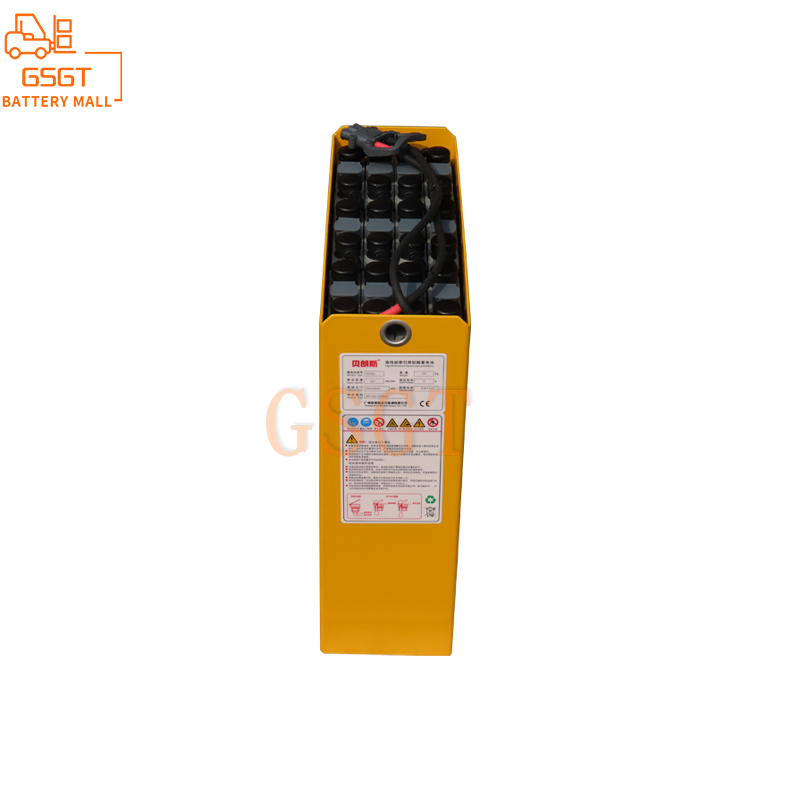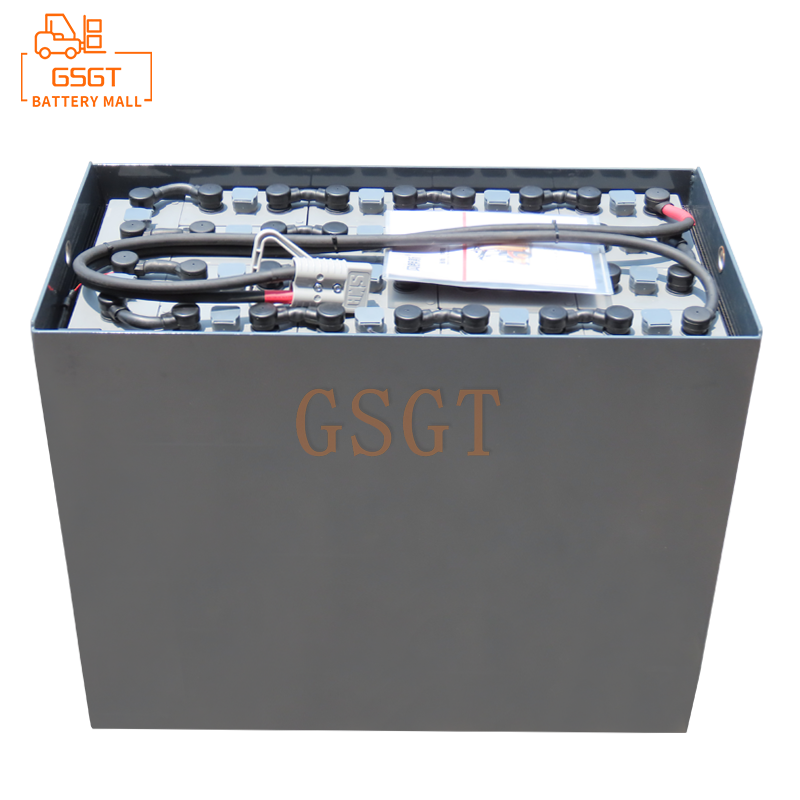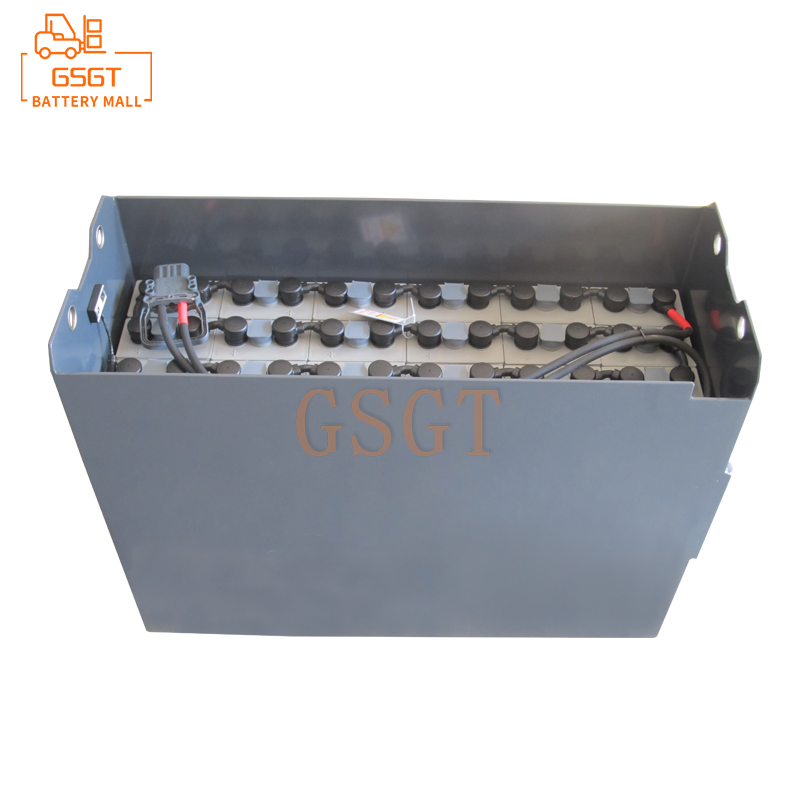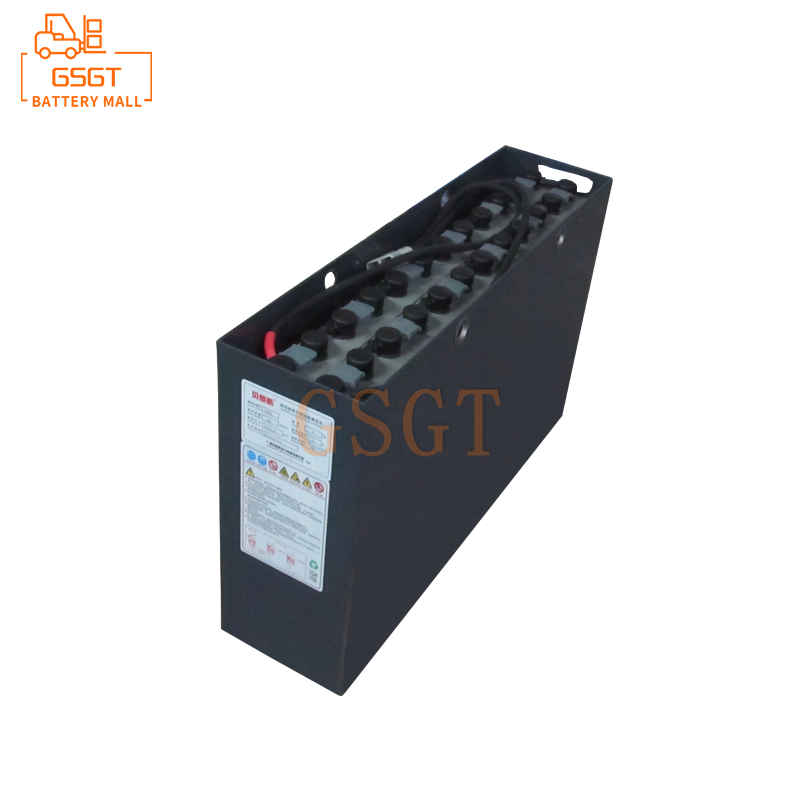Time:2025-04-01 10:13:46
Browse:621
In the field of modern logistics warehousing and industrial production, forklift is a key material handling equipment, and the performance and model compatibility of its power core - lead-acid battery has a decisive impact on the operation efficiency, operating cost and service life of forklift. Forklift lead-acid battery models on the market, each has its own characteristics, only in-depth understanding of the differences between different models, in order to accurately select, so that forklift trucks play the best performance.
Voltage difference: meet the power requirements of forklift trucks
1.Common voltage specifications: forklift lead-acid battery common voltage specifications are 24V, 36V, 48V, 60V, 80V and so on. These different voltage levels are like having different "power engines" for forklifts. The rated voltage of each single-cell lead-acid battery is usually 2V, and multiple single-cell batteries are connected in series to form a voltage that meets the different power needs of the forklift truck. For example, some light electric pallet trucks, due to its light load and relatively low operating speed requirements, often use 24V or 36V lead-acid batteries, such low-voltage batteries have low cost and are relatively easy to maintain. For large counterweight forklifts, forward forklifts, etc., because they need to carry heavy goods, frequent lifting and cope with complex conditions, they often need batteries with 48V and above voltage to provide powerful power.
2.Impact of voltage on forklift performance: voltage is directly related to the power output and operation performance of forklift. In general, the higher the voltage, the stronger the power that the forklift can obtain, and its driving speed, cargo lifting speed and climbing ability will be significantly improved. Taking a 3-ton counterweight forklift as an example, when using 48V lead-acid batteries, the full load driving speed can reach 18-20km /h, and the lifting time of the goods is about 15-20 seconds; When upgraded to a 60V battery, the driving speed can be increased to 22-25km /h, and the cargo lifting time can be reduced to 12-15 seconds. This is because the higher voltage can provide a stronger driving force for the forklift motor, so that the forklift is more efficient and agile during operation, and the operation efficiency is greatly improved.
3.Selection points: When selecting the battery voltage model, it must be closely combined with the type of forklift and the actual operation needs. For forklifts that frequently start and stop in small Spaces in warehouses and move goods over short distances, low-voltage models may be more suitable to meet power needs while reducing costs and maintenance difficulties. However, for forklifts that need to carry out long-distance and high-intensity operations in large logistics parks, ports and other open sites, high-voltage models are the inevitable choice to ensure that the forklift can operate stably and efficiently under various working conditions.
Capacity differentiation: Determines battery life and operating time
1.Capacity Meaning and expression: The capacity of the lead-acid battery is usually measured in ampere-hours (Ah), which represents the amount of electricity that the battery can release under certain discharge conditions. For example, a lead-acid battery with a capacity of 400Ah can theoretically discharge continuously for 20 hours if discharged at 20A current. The capacity is like the "fuel reserve" of the forklift, which directly determines the endurance and continuous operation time of the forklift.
2.Adaptation scenario of different capacity models: In actual applications, forklift trucks have different operating intensity and duration, and have different requirements on battery capacity. For forklifts that carry goods continuously for a long time in the logistics warehouse, such as working for more than 8 hours a day, large-capacity batteries are required. Assuming that the average power consumption of a forklift truck is 50Ah per hour, the battery with 400Ah capacity can support its continuous work for 8 hours, and after replacing the battery with 500Ah capacity, the battery life can be extended to 10 hours, reducing the charging frequency and improving the working efficiency. On the contrary, for forklifts that frequently start and stop in a small space and carry goods in a short distance, although the endurance requirements are relatively low, due to the frequent start and stop, the battery needs to have a good instantaneous large current discharge capacity, and a battery with a slightly smaller capacity but superior discharge performance can be appropriately selected at this time.
3.The relationship between capacity and cost: In general, the larger the capacity of the lead-acid battery, the higher the purchase cost. However, from the perspective of long-term use, choosing a suitable large-capacity battery and reducing the charging frequency can reduce the stagnation time caused by charging interruption, improve the overall production efficiency, and thus bring greater economic benefits. For example, in some large e-commerce warehouses, forklifts are busy, and the use of large-capacity batteries, although the one-time investment is higher, can ensure the continuous and efficient operation of forklifts, and the comprehensive cost is lower.
Cycle life comparison: related to long-term use benefits
1.Cycle life: refers to the lead-acid battery under certain conditions, from the fully charged state to the fully discharged state, and then back to the fully charged state, such a complete charge and discharge process is a cycle. When the battery capacity drops to 80% of the initial capacity, the number of cycles experienced is the cycle life of the battery. For example, a lead-acid battery with a cycle life of 1500 times, after 1500 complete charge and discharge cycles, its actual available capacity is reduced to 80% of the initial capacity, and the battery performance is greatly reduced, which may not meet the normal operation needs of forklifts.
2.Different models of cycle life differences: different models of forklift lead-acid batteries, cycle life is significantly different. The cycle life of ordinary lead-acid batteries is generally about 1000-1500 times, and some high-end models using advanced technology and materials can reach 2000 times or even higher. For example, a high-performance lead-acid battery of a certain brand has increased its cycle life to 2200 times by optimizing the plate material and manufacturing process, which greatly extends the service life compared with the ordinary model.
3.Impact on the cost of use: Although the purchase price of lead-acid batteries with long cycle life is relatively high, the overall cost is lower from the long-term use point of view. Take two forklift lead-acid batteries as an example, A battery cycle life is 1000 times, the price is 3000 yuan; B battery cycle life is 1500 times, the price is 4000 yuan. Assuming that the forklift needs 500 charge and discharge cycles per year, the A battery needs to be replaced once a year, and the cost is 3,000 yuan; The B battery is replaced twice every 3 years, and the average annual cost is about 2667 yuan. It can be seen that the selection of batteries with long cycle life can effectively reduce long-term use costs and improve economic benefits.
Internal resistance characteristics: affect the efficiency of battery charging and discharging
1.The concept of internal resistance: The internal resistance of the lead-acid battery refers to the resistance of the current through the battery, which is composed of plate resistance, electrolyte resistance, partition resistance and connection bar resistance. The internal resistance is usually measured in milliohm (mΩ), and although the value is small, it has a significant impact on battery performance.
2.The effect of internal resistance on charge and discharge: The internal resistance is directly related to the charge and discharge efficiency of the battery. When charging, the internal resistance will convert electrical energy into heat energy, resulting in energy loss and heating of the battery. The greater the internal resistance, the greater the energy loss during charging, the lower the charging efficiency, and the more serious the battery heat, which may affect the battery life. When discharging, the internal resistance will cause the battery output voltage to decrease, affecting the dynamic performance of the forklift. For example, when the internal resistance of the lead acid battery of the forklift increases, the voltage drop on the internal resistance will make the motor end voltage drop significantly due to the large current at the start moment, resulting in the difficulty of starting the forklift, unstable driving speed, and weak lifting of goods.
3.Different models of internal resistance difference: different models of lead-acid batteries, the internal resistance size is different. In general, batteries with high-quality plate materials, optimized electrolyte formulation and improved partition structure have relatively small internal resistance. For example, a new model of lead-acid battery by using high-purity lead alloy plate and new nano separator, the internal resistance is reduced by 20%-30% compared with the traditional model, effectively improving the charge and discharge efficiency and battery performance.
Special models for special conditions
1.Models for low temperature environments: In cold environments, such as cold storage, forklift operations face many challenges. Low temperature will increase the internal resistance of the battery and increase the viscosity of the electrolyte, resulting in a decrease in the battery capacity and poor charge and discharge performance. To this end, some battery manufacturers have launched models specifically suitable for low temperature environments. These models are usually optimized in terms of plate material and electrolyte formulation, such as the use of special lead alloy plates and electrolytes with better low temperature performance, and some models are also equipped with heating elements to ensure that the battery can maintain good performance at low temperatures to ensure the normal start-up and operation of the forklift.
2.High dust, vibration environment model: In mines, cement plants and other places where there is a lot of dust and large vibration during operation, forklift lead-acid batteries need to have high vibration resistance and dust resistance. Some special models of batteries, by improving the shell design, strengthening the sealing performance and optimizing the internal structure, effectively prevent dust from entering the battery, avoid the plate loosening due to vibration, the active substance falling off, to ensure the stability of the battery internal structure, maintain normal working performance.
Forklift lead-acid battery model selection is not a small matter, the need to consider voltage, capacity, cycle life, internal resistance and other factors, and closely combined with the forklift operating environment, working conditions and the cost effectiveness of the enterprise. Only by deeply understanding the characteristics and differences of different models and accurately matching the needs can the most suitable lead-acid battery be selected for the forklift to achieve efficient, stable and low-cost operation.

$1270

$2140

$2040

$1060

MESSAGE
Professional And Efficient
Security
Affordable Price
Professional Services